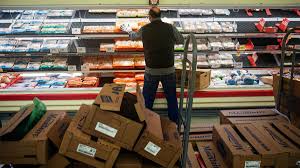When is a 14 per cent jump in average farmland values in this province actually a relief? When it’s compared to the 23 per cent jump that took place from 2012 to 2013, that’s when. The 14 per cent figure, last year’s jump, may signal a downward trend has started. That’s good for food prices, because ultimately, increases in land prices will be passed on. J.P. Gervais, Farm Credit Canada chief economist, says the market could be even quieter than the average increase suggests, considering the data used was collected roughly 16 months ago.
And here’s why farmland values matter to a nation. Recently, Agriculture and Agri-Food Canada released its annual state-of-the-union report on Canadian agriculture. It showed how significant agriculture is to the nation, and to the world, in fact — we are the world’s fifth-largest exporter of agriculture and agri-food products. But although Canadian export sales grew by 5.5 per cent in 2013 to $46 billion, our competitors’ sales grew too, and we were only able to maintain our 3.5 per cent share of the total value of world agriculture and agri-food exports. So how do we stay competitive and help farmers keep prices down while making a decent living?
The answer is research. The report says government spending on research and development in the agriculture and agri-food sector “represents a critical source of innovation and productivity growth,” and estimated a rise in investment of more than five per cent last year. However, Canada’s public research and development spending has decreased over the past five years. Funding should be based on what our farmers need to stay ahead, and on what our nation needs to be move forward. That’s how we’ll feed our country, and help feed the world.



